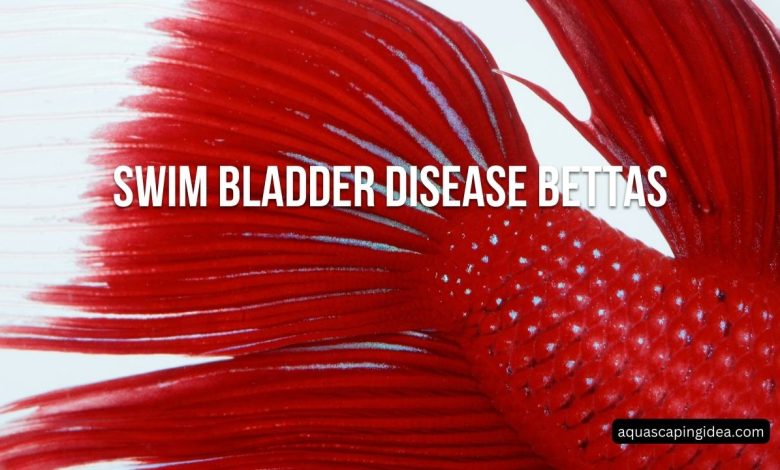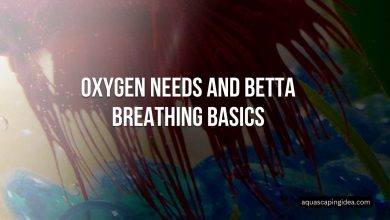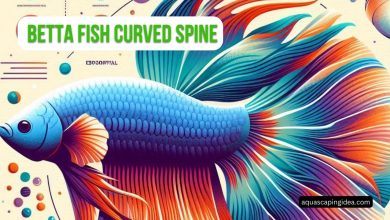Swim Bladder Disease Bettas: Symptoms, Causes, Treatment

Beneath every betta’s shimmering veil of fins beats a complex web of physiological systems fine-tuned to meet aquatic life’s unique demands. Flip your fish over and peer just under the spine to spy a tucked-away pouch designed to match air pressure within to the push and pull of outside water currents. This swim bladder organ works flawlessly to retain ideal depth – that is until disease throws its meticulous metrics completely out of whack.
Like a foundering hot air balloon, a swim bladder infection can leave bettas helplessly shooting towards the surface or sinking like a discouraged stone. These twin presentations of “floaters” and “sinkers” point to disrupted pressure balances inside the swim air sac itself or secondary organ systems pinching its flow.
While such buoyancy troubles appear dire with fish struggling to simply stay oriented, correctly diagnosing the root factors driving disease often reveals straightforward solutions. This articles dives into the workings of healthy swim bladders, then explores how problems arise and finally surfaces with effective treatment plans to get our bettas evenly keeled. Let’s get our fish back to effortlessly riding tank thermals!
Swim Bladder Anatomy and Function
That air-filled bulb tucked beneath betta backbones holds secrets to their smooth spiraling ballet within tank walls. The swim bladder consists an internal gas gland connected to the gastrointestinal tract. Cells specialized in accumulating or releasing gas molecules actively track outside water pressure signals communicated via blood circulation. Adjusting internal bladder air volume to match changing external hydrostatic forces permits effortless suspending at desired depths without constantly paddling to stay afloat or descending.
This pressure-sensitive relationship works through a “counterbalance” mechanism similar to mercury thermostats. As water pressure compresses the body at lower levels, specialized sensors signal more gas gets pumped into the bladder to achieve overall ideal body tissue density approximating that of the surrounding water. Exact internal and external pressure matching eliminates gravitational force, allowing smooth gliding unencumbered by severe buoyancy differences.
It is this precise pressure pairing and gas regulation that gets thrown off course in swim bladder disease. Anything hindering ideal homeostasis between the fish’s internal and external aquatic environments risks buoyancy burnout. So what exactly sends function into a tailspin?
Swim Bladder Disease Causes
Healthy swim bladders carefully calibrate internal gas exchange to offset external water density shifts from diving and rising through different pressure zones. Trouble starts when homeostasis falters between the bladder’s inflation status and the surrounding water currents. Important drivers include:
- Bacterial or parasite infections directly damage the bladder wall interfering with inflation signals and gas transfer to and from attached blood vessels. Pathogens like Aeromonas and Pseudocapillaria attack tissue integrity.
- Foreign bodies block connections between the bladder and gastrointestinal gas sources used to fill the compartment. Feeding-related issues like constipation or enlarged parasites shed from consumed insect larvae occlude ducts.
- Pressure change trauma arises after transferring bettas between vastly different water conditions without gradual acclimatization. The bladder stretches beyond capacity to compensate when moved suddenly between high and low pressure zones.
- Physical bladder injury from fights or tank decoration abrasions allow escaping gas exchange leading to deflation. Wall tears act like holes in a balloon.
- Congenital malformations create bladder pouches too small or irregularly shaped to generate sufficient internal lift. Genetic breeding issues transmit anatomical defects.
Two primary presentations arise from bladder malfunction: “floaters” with runaway positive buoyancy or “sinkers” weighted by negative pressure problems. Pinpointing the exact drivers sets treatment on course. First, let’s learn the telling symptom signatures of swim bladder disease.
Presenting Signs
Watch for these key signs of swim bladder disorder linked to root causes:
Sinkers
- Lying on tank bottom often oriented head tilted down
- Labored breathing efforts paddling upwards
- Loss of appetite from difficulty ascending for feeds
- Fins clamped to body since unable to achieve neutral buoyancy
Floaters
- Betta stuck hovering at water surface without descending
- Body tilted upside down, abdomen aimed skyward
- Increased appetite with easy access to surface foods
- Flared fins trying to maneuver position without success
- Hindered gill function in upper oxygen-poor levels
Also assess for potential originating factors:
- Enlarged body profile signaling possible constipation/obstruction
- Prior major tank habitat disruption like filtration loss
- New tank inhabitants possibly transmitting infections
- Skin tears suggesting recent structural trauma
Clarify the timeline, tank circumstances, appetite/waste changes and other clues illuminating bladder function decline. Now let’s integrate findings to chart diagnostic and treatment courses.
Navigating Diagnosis and Treatment
Addressing swim bladder disease involves first detecting likely anatomical or inflammatory issues through hands-on inspection, then matching integrated therapies to identified malfunctions:
History Gathering
Construct recent timelines for symptom onset, housing changes, new tankmates and feeding modifications. Ask about recent water parameter disruptions. Look into genetic ancestry and body conformation.
Physical Exam
Assess overall fish morphology and condition while inspecting the body cavity for enlarged organs or foreign bodies. Palpate gently for organ enlargement or obstructions. Note skin abnormalities suggesting trauma.
Microscopy
Fresh mount specimens check for parasite loads given transmission potential. Conduct bacterial culture swabs assessing common pathogens like Aeromonas. Consider ultrasound imaging for congenital defect screening if available.
Root Cause Summary
Synthesize exam findings with a final diagnosis attributing disease drivers like obstruction, infection, anatomic defects, etc. This determines therapeutic directions.
Treatment Planning
Match tactics to identified swim bladder disturbances:
- Congenital defects: Long term tank shape and decor changes to assist movement
- Obstructions: Laxatives, hydration and high-fiber diet integration
- Infections: Appropriate antibiotic course based on culture results
- Trauma: Supportive wraps, topical antibiotics, water alkalinizers
Expect a multidimensional approach including medications coupled to permanent environmental optimization for lifelong defects and temporary modifications aiding infections and obstructions in resolution. Monitor progress adjusting protocols as needed until buoyancy normalizes.
Prevention Planning
Arm against future swim bladder catastrophes using these preventatives:
- Select reputable breeders and robust stock
- Quarantine incoming fish before batch introductions
- Adapt tank water parameters slowly, avoid rapid pressure shifts
- Feed pellet formulas with fiber and ideal protein balance
- Design landscape layout avoiding tight spaces and abrasive decor
An ounce of prevention through proactive systems husbandry stops this buoyancy-busting disease from ever taking fish down!
FAQs
Can severely affected bettas recover fully after swim bladder treatment?
Yes, most infections, foreign bodies and minor injuries resolve with appropriate therapy. However, congenital malformations may persist requiring permanent tank accommodation.
How long does managing swim bladder disease take?
Straightforward cases may resolve in 1-2 weeks with focused treatment. Complications like malformations prolong interventions indefinitely requiring lifetime care adjustments.
Do fish feel pain with swim bladder disorders?
Direct bladder organ disease causes little discomfort. However secondary outcomes like nutritional deficiency, exhaustion and physical injury greatly diminish welfare over time if unresolved.
Is euthanasia ever indicated for chronic swim bladder disease?
Yes, rare untreatable cases leading to profound body shape distortion, permanent immobility or starvation may qualify following extensive therapy attempts.
Conclusion
Like a hampered hot air balloon stubbornly tethered off course, understanding and addressing root causes of swim bladder disease grants the best chance our bettas can again smoothly ride tank thermals on even keel. Interpret presenting signs, run thorough diagnostics, then match targeted treatment ingredients to each fish’s distinct issues. With appropriately ballooned buoyancy chambers, vibrant good health for our aquatic friends waits just around the waterline! Commit to unlocking the mysteries inside intermittent sinkers and stubborn floaters. Great rewards come from persevering to right wandering finned companions knocked temporarily off depth by swim sac hiccups. Stay attentive to quickly act restoring balance when buoyancy backfires. Your watchful dedication reaps benefits for all to delight observing bettas again dance their tank water ballets.



